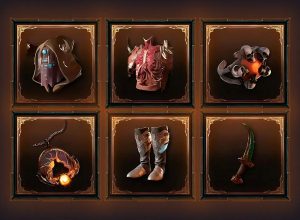I don’t play many video games. But I do play Diablo, ever since those far away days around 1997 when a few coworkers and I used to play at night, using the office LAN. With Diablo III, my professional and recreational interests collided once again, because Diablo III included an auction house where players could trade items for either cash or game gold.
For those of you who do not choose to spend weekend hours clicking madly on demons so that you can collect an ever-expanding variety of virtual magic hats, let me explain that this is a big departure. In previous versions of the game, you could sell your stuff to in-game merchants (who would often turn around and sell you more magic hats). To sell items to another player, however, you had to go to eBay or another marketplace, and auction it off. Then once you’d paid up, the two of you would meet up in multiplayer mode, and you’d drop your magic hat so that they could pick it up.
Diablo III changed this. It created an auction house that was integrated with the game client, so that you could go sell your own magic items to other players. Transactions could happen in either cash or game gold. And Blizzard takes a 15% cut of the real-money transactions; the commissions that used to flow to eBay now accrue to them. Meanwhile, the merchants in Diablo III seem to have been designed to steer you to the auction house. It used to be that they’d pay, say, 50 gold for a regular warhammer, and sell the thing for 200. Now they’ll pay 12 and sell it for 312. The markup is so absurd that it’s barely worth borrowing picking up anything except special magical items.
As with previous games that have experimented with trading systems, I expected this to offer a wealth of interesting new economic tidbits.
Well, here’s the first: Jay Wilson, the director of Diablo III, regrets including the auction house feature. Somewhat to my surprise, he says the problem is not with the real-money auctions, but with the ones that trade for game gold.
Former Diablo 3 Game Director Jay Wilson admitted during a talk at GDC 2013 in San Francisco that both of Diablo 3’s Auction Houses (both the real-money and the in-game gold item auction house) “really hurt the game.” Wilson said that before Blizzard launched the game, the company had a few assumptions about how the Auction Houses would work: He thought they would help reduce fraud, that they’d provide a wanted service to players, that only a small percentage of players would use it and that the price of items would limit how many were listed and sold.
But he said that once the game went live, Blizzard realized it was completely wrong about those last two points. It turns out that nearly every one of the game’s players (of which there are still about 1 million per day, and about 3 million per month, according to Wilson) made use of either house, and that over 50 percent of players used it regularly. That, said Wilson, made money a much higher motivator than the game’s original motivation to simply kill Diablo, and “damaged item rewards” in the game. While a lot of the buzz around the game attacked the real money Auction House, “gold does much more damage than the other one does,” according to Wilson, because more players use it and prices fluctuate much more.
It sounds like Diablo III is having a problem with its money supply. Again, to rehearse for those who are not Magic Hat Warriors, you get gold by finding it in chests or other hidey-holes, or by killing demons. The higher the difficulty you play on, the more gold you get. But the game’s gold drops are not calibrated for a stable price level and reasonable pace of economic growth; they’re set to help you survive, by enabling you to repair your armor and buy health potions or better weapons. And what do you get when monetary growth is not calibrated to underlying growth in the real economy? Wild fluctuations in the price level.
Diablo III wouldn’t be the first to have these sorts of problems. In 2002, Everquest players found a way to almost literally mint money, and the resulting inflation nearly brought the virtual economy to its knees. The best solution that massively multi-player online role playing games have found is to create “money sinks”: very expensive items that you can only buy from the game itself, not other players.
And what did I see when I logged in to check on some prices for this blog post? New “plans” for special items that I can have the blacksmith make. Those plans cost $1.5 million in game gold. For reference, I, now playing through the third act of the hardest difficulty level, have about 10,000 in game gold right now. That’s on the low side, of course. But 1.5 million is very, very high.
So Diablo III may have found a way to control the price swings. At least, until people start using their expensive new plans to mint even more pricey armor for the auction house.



